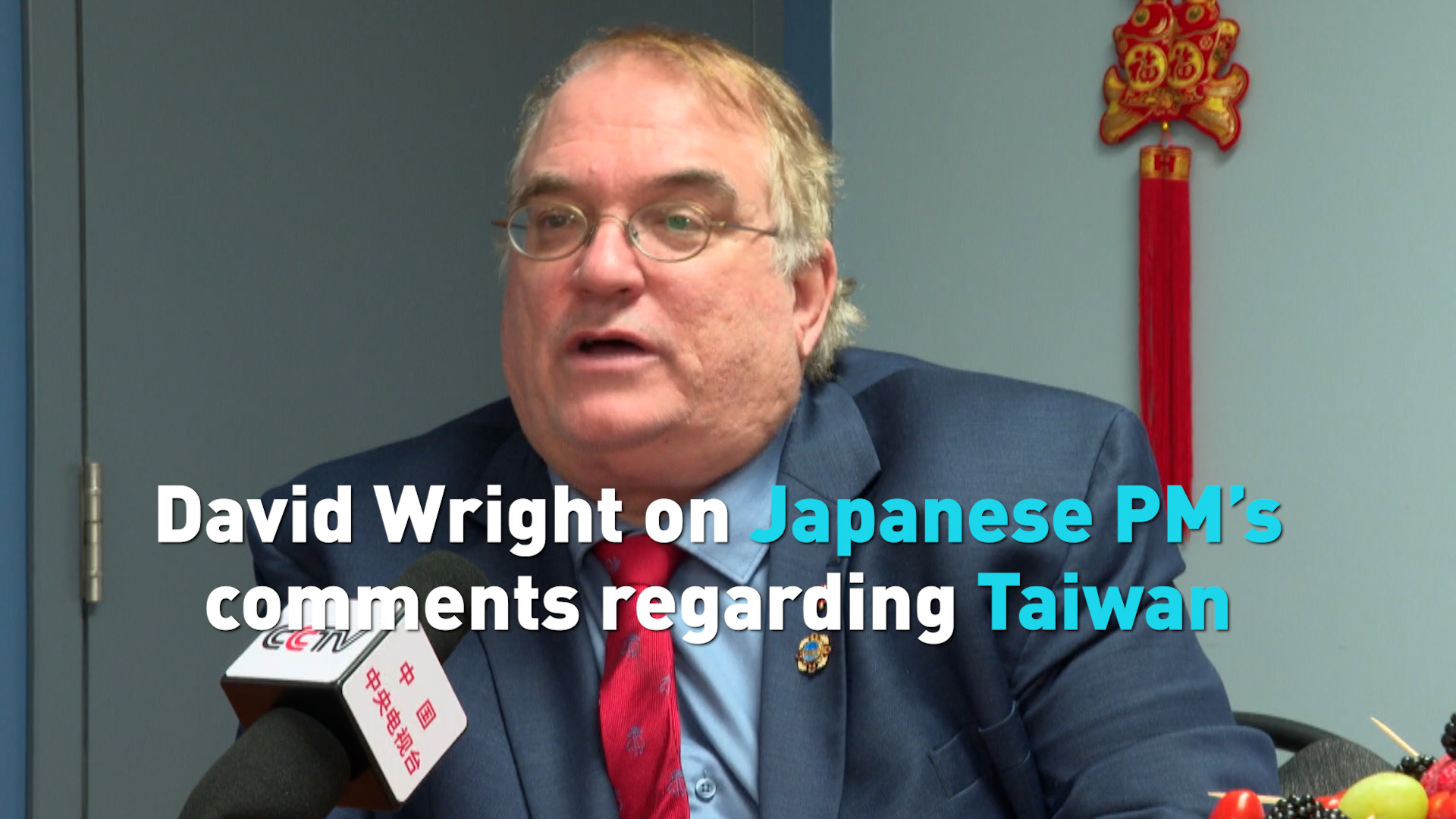US Chip Export Controls Strengthened Chinese Tech Companies; AI and China Daily Updates

Canada-China Relations: A Diplomatic Tug of War
In the aftermath of Mark Carney's ascent as Canada's Prime Minister, dynamics with China are under the lens. The BBC articulates how Carney's firm stance against U.S. policies significantly contributed to his electoral victory. This raises questions about Canada's diplomatic positioning between its two largest trading partners: the U.S. and China. The narrative from Chinese perspectives, as seen through the lens of international observers, suggests an opportunity for enhanced China-Canada ties. However, ongoing trade disputes and security concerns, highlighted by reciprocal sanctions and tariffs, complicate these prospects.
This intricate relationship reflects broader geopolitical shifts where middle powers like Canada must navigate their foreign relations amidst superpower tensions. The analysis of trade policies and diplomatic strategies will play a crucial role in determining the stability and future of Canada-China interactions.
U.S. Chip Export Controls and China's Tech Landscape
The impact of U.S. export controls on semiconductors appears to have paradoxically strengthened Chinese tech companies, as noted in The New York Times. This counterintuitive outcome underscores the resilience and adaptability of China's tech sector, which has been compelled to accelerate its self-reliance in chip manufacturing.
By fostering an environment of technological innovation under pressure, China has potentially bolstered its industry capabilities. This strategic pivot aims to reduce dependency on U.S. technology, which is increasingly crucial amidst escalating trade tensions. As these developments unfold, they raise critical questions about the efficacy and long-term implications of U.S. policy measures intended to restrain China's technological ascent.
Using AI for Enhanced Administrative Monitoring
In recent developments, the application of AI to enhance administrative monitoring has taken a significant leap forward in China. The latest approach, highlighted by The Paper (source), demonstrates how AI tools are being used to monitor and efficiently regulate companies, specifically addressing issues related to 'inspection harassment'. This involves administrative enforcement agencies potentially over-checking businesses, which can hamper their operations.
For example, a city in Zhejiang has employed AI to support regulatory oversight and reduce the burdens on enterprises. By using data analytics from the Zhejiang Province's administrative enforcement monitoring platform, a local court found that a particular hotel had been inspected excessively from January to March 2024, raising concerns of inspection harassment. To understand these inspections comprehensively, the city's judiciary developed an 'AI administrative enforcement intelligence return visit application'. This tool gathers feedback and performs precise oversight by directly engaging with businesses, effectively identifying issues.
AI in Enhancing Inspection Processes
An AI-driven application has been instrumental in automating the review and feedback from businesses that have undergone inspections more than four times within a 90-day period. Using language models, the system collects, analyzes feedback, and identifies high-frequency inspection sites, allowing for efficient decision-making. This compares the acquired data with provincial enforcement records to judge the legitimacy of the inspections.
This initiative underscores the potential for AI to refine regulatory practices by providing actionable insights into the impacts of excessive administrative inspections. The feedback mechanism allows businesses to report and rate their inspection experiences, generating a streamlined set of checks and balances that optimize resource allocation and improve compliance without compromising business activities.
AI's Intersection with Space Exploration
In Macau's BEYOND International Technology Innovation Expo, a new frontier was highlighted by Alibaba founder Wang Jian, who posits that AI applications must transcend traditional devices and venture into space. His talk, reported by The Paper, emphasized the potential of satellite networks to resolve computational bottlenecks faced by current AI systems on Earth, pushing AI's capabilities into uncharted territories.
The Paper focuses on Wang's futuristic vision, advocating for an AI ecosystem that is not limited to terrestrial concerns. He argues convincingly that computation will remain a significant barrier unless addressed innovatively, such as through proposed satellite constellations. This notion ties into global challenges of achieving a truly robust AI infrastructure capable of supporting advancements such as Artificial General Intelligence (AGI).
Challenges and Debates in Software Updates
Tencent's coverage on Microsoft's recent Windows 11 update brings attention to the substantial increase in file size due to included AI functionalities. The compatibility and relevance of these updates in less AI-dependent environments, such as servers, have sparked debates over deployment strategies and the efficiency impact on systems.
Tencent’s article hints at a potential disconnect between Microsoft's optimization promises and actual user experience, marking a pivotal point of contention that could influence enterprise IT management decisions globally. This expansion of AI into such updates, regardless of their necessity, reflects the tech industry's broader push to seamlessly integrate AI across all platforms.
Strategic Moves in AI Hardware Development
OpenAI’s ambitious acquisition of a design company founded by Jony Ive reaffirms its commitment to pioneering AI hardware solutions. As reported by United Daily News, this $6.5 billion transaction is pivotal for OpenAI as it aims to develop groundbreaking AI devices, potentially revolutionizing the industry and consumer AI interaction.
The article underscores OpenAI CEO Sam Altman's strategic foresight in harnessing Ive's design acumen, which once shaped iconic Apple products. This collaboration is more than just a business move; it signifies a blend of visionary aspirations and practical advancements in AI-driven consumer technology.
These narratives collectively illustrate the dynamic landscape of AI, from telecommunications challenges and ambitious space-bound applications to new hardware ventures and software innovations. Global markets and various industries remain directly influenced by these rapidly evolving AI developments, highlighting the profound impact of technology on daily life and economic structures worldwide.
Crisis in Telecommunications and Its Economic Implications
Sina News dives into the struggles faced by China Broadnet, one of the major telecom operators. The report highlights operational challenges, including halted service in multiple provinces due to systemic and logistic issues, as well as a broader financial struggle within the industry. While aiming to expand user numbers significantly by 2025, the reality presents obstacles due to pricing strategies leading to thin profit margins.
Sina's narrative points to the underlying structural challenges in China's telecom sector, revealing a critical sector facing growing pains as it attempts to scale rapidly in a competitive and evolving market. On an international level, these challenges echo in other markets looking to rapidly expand their telecom infrastructure, highlighting the complexities of balancing growth, pricing, and profitability.
Innovations in Sustainable Energy and Transportation
Sina News reports on China’s advancements in electric mining transportation with the first-ever deployment of autonomous pure electric mining trucks by "Huadian Zhiji," marking a milestone in operational efficiency and sustainability. These trucks, powered by iron-phosphate batteries and utilizing intelligent safety controls, are set to improve mining operations by reducing carbon emissions significantly.
This development resonates with global sustainability trends, presenting China as a leader in adopting green technologies across industries. The success of such projects not only paves the way for China’s domestic zero-emission goals but also sets an example for other countries pursuing similar environmental sustainability initiatives.
Regional Energy Efficiency Milestones in Tibet
Another report from Sina News highlights Tibet's milestone in green electricity, achieving over 1 billion kilowatt-hours of green energy transactions within a year. This is a testament to China's commitment to enhancing its renewable energy systems and reflects the impressive growth in Tibet's energy sector. The initiative aids in carbon reduction and emphasizes energy efficiency and economic benefits.
Tibet's accomplishment serves as a microcosm of China's broader renewable energy efforts and offers insights into how strategic internal planning can yield substantial environmental and economic returns. This development holds international relevance as countries worldwide strive for efficient energy use and environmental sustainability, illustrating Tibet as a case study in successful energy transition strategies.
Climate Change and Global Water Security: Challenges and Opportunities
The recent conference of the International Commission on Large Dams (ICOLD) in Chengdu, China, hosted over 2,000 participants from 80 countries and regions, as well as from more than 10 international organizations. The main agenda was the release of the World Cities Declaration emphasizing the vital role of large dams in energy transition and climate adaptation. Chinese Minister Li Guoying outlined China’s commitment to building safer, smarter, and more eco-friendly reservoirs, enhancing their role in meeting intensified water demand due to climate change.
This initiative reflects a significant recognition of dams as crucial infrastructural elements to mitigate extreme water shortages and promote renewable energy. The Chinese government's focus on integrating ecological protection into dam design and operation marks a concerted effort to harmonize infrastructure with sustainability. China's extensive experience and capacity in dam construction, such as the Three Gorges Dam, are seminal in setting global standards for hydraulic engineering.
Market Regulation Intensification
The recent developments from China's State Administration for Market Regulation highlight a rigorous crackdown on unauthorized fees imposed by government departments and their subsidiaries. According to The Paper, the administration plans to deepen its specialized actions in auditing and rectifying irregular fee collection, a move aimed at fostering a fairer business environment. These efforts underscore China's central government's determination to streamline administrative practices that burden enterprises financially. Notably, the article also points out persistent challenges in electronic administration platforms and invisible charges that some enterprises vehemently oppose. Such deep scrutiny of governmental and affiliate bodies marks a systemic push to alleviate the overbearing financial pressures faced by businesses.
This narrative from The Paper suggests an ambition to revitalize market vitality and enhance China's competitiveness on the global stage. The scrutiny might signal a shift towards greater transparency and fairness in China's market practices. This reformation could have a ripple effect, encouraging foreign investments and aligning with international norms on business conduct.
Support for Tech Innovation: Hangzhou's AI Prospects
In a striking example of local government backing for technology enterprises, Hangzhou's government report, as covered by The Paper, underscores the city's support of companies like DeepSeek. This initiative hints at Hangzhou's broader strategy to position itself as a hub for artificial intelligence (AI) and technological innovation. The mention of "Hangzhou's six small dragons," representing leading start-ups in AI, shows an intention to nurture these enterprises into unicorns of global significance.
This support is not just local; it conjures national interest, seen in delegations from various other regions exploring Hangzhou's model. China's emphasis on AI could set new standards in digital economies and innovation landscapes worldwide, further pushing geopolitical shifts in technological supremacy.
Infrastructure Expansion in the Greater Bay Area
The new 264.5-meter "water tower" power line project in the Greater Bay Area, reported by CCTV News, exemplifies China's commitment to enhancing its infrastructure capabilities. This colossal development enhances power supply resilience and capacity, crucial for the area's rapid industrial and tech growth. The technical feat exemplified by this tower, being the highest power transmission tower over water in the country, also underscores China's engineering prowess and disaster-preparedness strategies.
Enhancing such infrastructure capabilities is likely aimed at sustaining industrial momentum and accommodating further economic integration within the region. The improvements reflect ambitions that reach beyond borderlines, possibly affecting regional energy markets and fostering cross-border energy cooperation.
Gun Violence and Diplomatic Repercussions in Washington
On May 21, a tragic shooting incident unfolded near the Israeli Embassy in Washington, killing two employees. According to The Paper (澎湃新闻), the suspect, hailing from Chicago, was quickly apprehended after shouting "Free Palestine." This tragic episode has highlighted ongoing tensions concerning U.S. foreign relations, particularly in how domestic acts of violence can echo international conflicts. United Daily News (联合报) reported that local police and the FBI are investigating the incident, probing potential links to terrorism or hate crimes against Jewish communities. The narrative in United Daily News seemed more focused on potential motives and the broader implications of hate-driven violence, perhaps suggesting a regional perspective on geopolitical complexities.
Rising Tensions on the Korean Peninsula
On May 22, North Korea conducted a missile test, as reported by the World Journal (世界新闻网). This marks the third such test this year, causing heightened alertness in South Korea and the U.S. The frequency and timing of these tests around key geopolitical events illustrate North Korea’s intent to exert pressure on neighboring countries and the U.S. This is seen by regional observers as a continued strategy by Pyongyang to leverage military provocations for strategic gains, especially as South Korea and the U.S. ramp up defense cooperation.
Diplomatic Shake-ups in the Philippines
As reported by CCTV News (央视网), on May 22, the Philippines saw a major reshuffle in its diplomatic corps with Foreign Minister Teodoro Locsin resigning to allow President Ferdinand Romualdez Marcos Jr. to re-align the government ahead of mid-term adjustments. This move is indicative of the Philippines' ongoing efforts to recalibrate its foreign policy, balancing between U.S. alliances and its regional challenges amid China's increasing activities in the South China Sea.
U.S.-South Africa Diplomatic Rift
The visit of South African President Cyril Ramaphosa to Washington sparked controversy when President Trump accused South Africa of ‘genocide against white people’ during a meeting, as reported by Xinhua News Agency. This blunt accusation has strained bilateral relations already tense over differing policies on land redistribution. Xinhua highlighted that South Africa's racial policies post-apartheid continue to be a sensitive topic and are often misunderstood internationally. This tension reflects deeper issues in the U.S.'s foreign policy stances that often intersect with internal narratives of race and land rights.
This incident, covered in detail by The Paper, highlighted a contentious exchange over allegations of "white genocide" in South Africa. President Trump showcased dimmed lighting to present videos and reports claiming racial violence against white farmers in South Africa, countered sternly by Ramaphosa, who denied such racial targeting.
The narrative reflects deep-seated geopolitical strains amplified by Trump's administration, exacerbated further by pre-existing frictions. South Africa has historically faced scrutiny over its racial policies post-apartheid, yet the "white genocide" narrative has been largely confined to fringe political discourse, lacking grounding in actionable intelligence. However, Trump's focus on these claims demonstrates a potential politicization of foreign relations grounded in domestic political arenas.
North Korea in Naval Accident
In North Korea, a significant naval incident occurred, as reported by Xinhua News Agency. A newly constructed submarine was damaged during a launch ceremony, drawing direct criticism from Kim Jong-un towards relevant military and industrial agencies. This highlights ongoing challenges within North Korea’s military industrial complex and mirrors the broader failure of the regime to modernize effectively under harsh sanctions.
India-Pakistan Diplomatic Expulsions
A diplomatic spat erupted between India and Pakistan, where both countries expelled a diplomat from the opposite country, citing espionage activities, as reported by CCTV News. This is viewed as a reflection of persistent tensions that flare between the two nuclear-armed neighbors, mired in decades-long border disputes and historical animosities.
U.S. Migration Policies Challenged
The United Daily News (联合报) highlighted a judicial ruling in the U.S. against the government's plan to relocate migrants to a third country without adequate hearing opportunities. This development underscores ongoing controversies within the U.S. regarding immigration policy, intensifying debates over humanitarian responsibilities versus border controls.
Journalistic Integrity Under Scrutiny in Hong Kong
Meanwhile, in Hong Kong, the media industry is under pressure due to tax probes into independent news organizations, as reported by the New York Times. This situation highlights a tension between freedom of expression and governmental oversight in a region known for its distinct administrative status under the "one country, two systems" model. The New York Times notes similar probes affecting several media personnel which signifies a broader chilling effect on press freedom.
This narrative reflects the complex dynamics between autonomy, authority, and international perceptions of governance within the region. The ongoing challenges could ostensibly influence international media operations and cooperations, potentially reshaping the landscape of journalistic practices in politically sensitive regions.



